Feeding your baby for the first time is exciting, emotional, and maybe a little nerve-wracking. You want to get it right – to give them something healthy, safe, and made with love.
That’s where homemade baby food comes in. It’s simpler than you might think, and it lets you control exactly what goes into your baby’s tiny tummy.
In this blog, you’ll learn how simple and rewarding homemade baby foods can be.
From first bites to easy recipes and safety tips, I’ll help you make mealtime natural, healthy, and full of love – one spoon at a time.
When to Introduce Solid Food to Babies
Many parents think of when it’s safe to start feeding babies homemade food and how to do it correctly. The good news is, it’s easier than it sounds once you know the basics.
Signs Your Baby is Ready
Most babies are ready for solid foods around six months of age. Look for these signs before you begin:
- Good head control: Your baby can hold their head steady.
- Interest in food: They watch you eat or reach for your plate.
- Can sit with support: Sitting upright helps with safe swallowing.
Tip: It’s always best to talk to your pediatrician before starting. They can confirm if your baby’s digestive system is ready and help rule out allergies.
First Feeding Methods: Purees, Baby-Led Weaning, or Both
There’s no single right way to begin – every baby is different:
- Purees: Great for beginners. Smooth, easy-to-swallow foods let you introduce one ingredient at a time.
- Baby-led weaning: Let babies eat soft finger foods by themselves, helping them learn to control their eating early.
- Combination approach: You can mix both styles – start with purees and slowly add small soft pieces as your baby grows.
Tip: Start with smooth textures and gradually progress to thicker foods. The goal is to let your baby explore, taste, and learn at their own pace.
Starting homemade baby food feels like a big step, but it doesn’t have to be stressful. With the right timing and approach, you can make it simple and enjoyable for both you and your baby.
Best and Easy Homemade Baby Food Recipes
Feeding your baby homemade food doesn’t have to be complicated. These easy and nutritious recipes are organized by category and age, helping you plan meals that fit your baby’s stage and taste perfectly:
Fruit Purees and Mashes
Fruit purees are the easiest way to start homemade baby food. They’re naturally sweet, simple to prepare, and help your baby adjust to real food in a gentle, healthy way.
1. Apple Puree
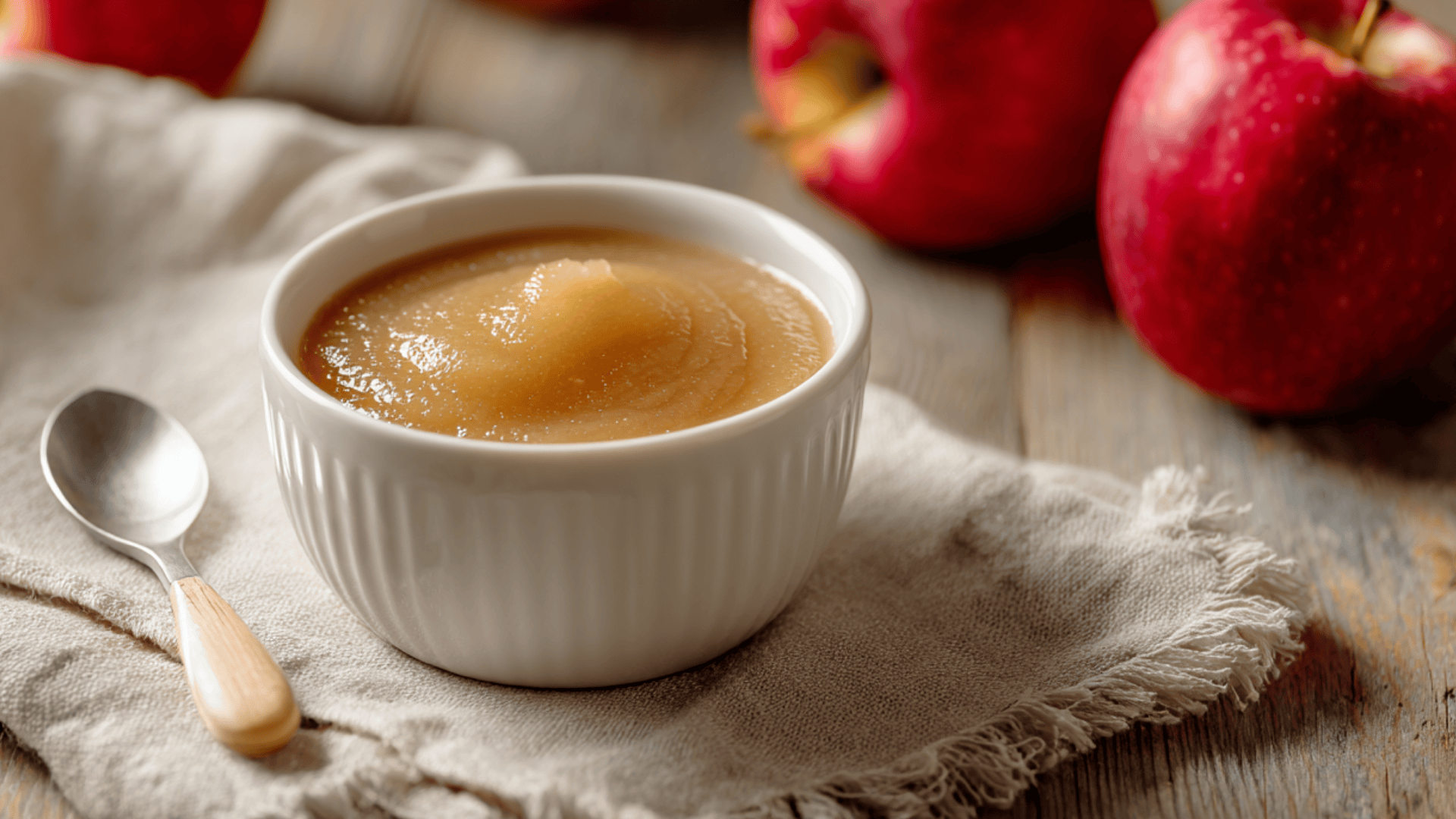
Apple puree is smooth, lightly sweet, and perfect for your baby’s first food. It’s gentle on the stomach, easy to digest, and introduces a naturally pleasant flavor that babies quickly enjoy.
How to Make:
- Peel and slice a fresh apple.
- Steam for 5–7 minutes until soft.
- Blend with a little water until smooth.
- Cool and serve fresh.
Nutritional Facts:
Apples are rich in fiber, which keeps digestion regular. They also provide vitamin C that supports your baby’s immune system and overall growth.
2. Banana Mash

Banana mash is creamy, naturally sweet, and packed with quick energy. It’s one of the easiest baby foods to prepare, helping babies stay full and satisfied after every meal.
How to Make:
- Peel a ripe banana with brown spots.
- Mash with a fork until smooth.
- Add milk or water for a softer consistency.
Nutritional Facts:
Bananas are a great source of potassium and magnesium, which aid muscle development. They also provide natural sugars that give steady, gentle energy for growing bodies.
3. Pear Puree
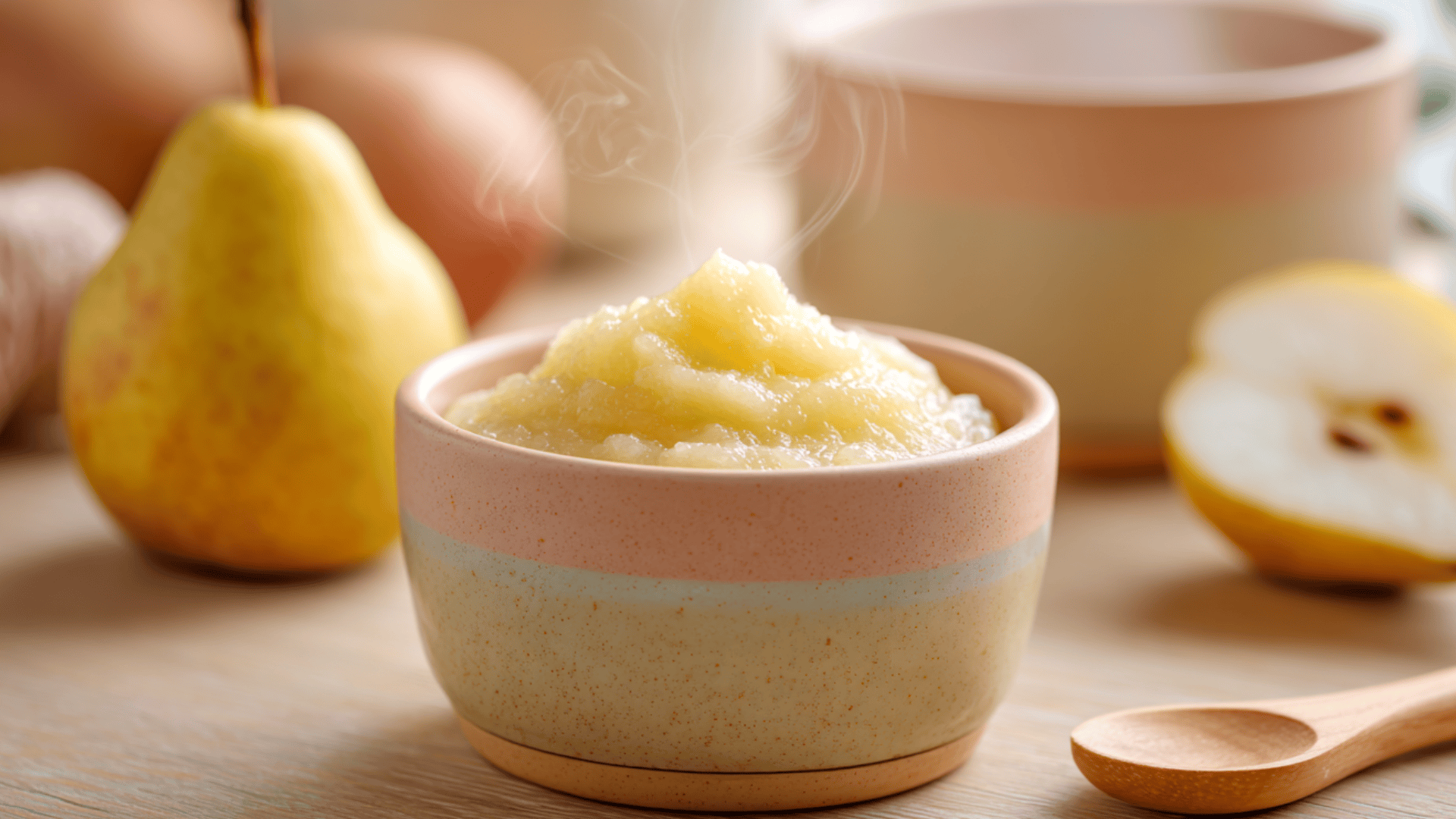
Pear puree has a light, refreshing taste and smooth texture. It’s soothing for tiny tummies, helps with digestion, and is perfect for easing your baby into solid foods.
How to Make:
- Peel and cut ripe pears into chunks.
- Steam for 5–6 minutes until tender.
- Blend into a soft, lump-free puree.
- Let cool before serving.
Nutritional Facts:
Pears are packed with fiber, which supports healthy digestion. They’re also hydrating and contain antioxidants that protect your baby’s developing cells.
4. Mango Puree

Mango puree brings a bright, tropical flavor that babies love. It’s smooth, colorful, and full of essential nutrients that help support healthy eyes, glowing skin, and growing bones.
How to Make:
- Peel and slice ripe mango pieces.
- Blend until smooth and creamy.
- Add a few drops of water if the mixture is too thick.
Nutritional Facts:
Mangoes are rich in vitamin A, which supports vision and immune function. They also provide folate and fiber, both important for healthy growth and digestion.
5. Avocado Cream
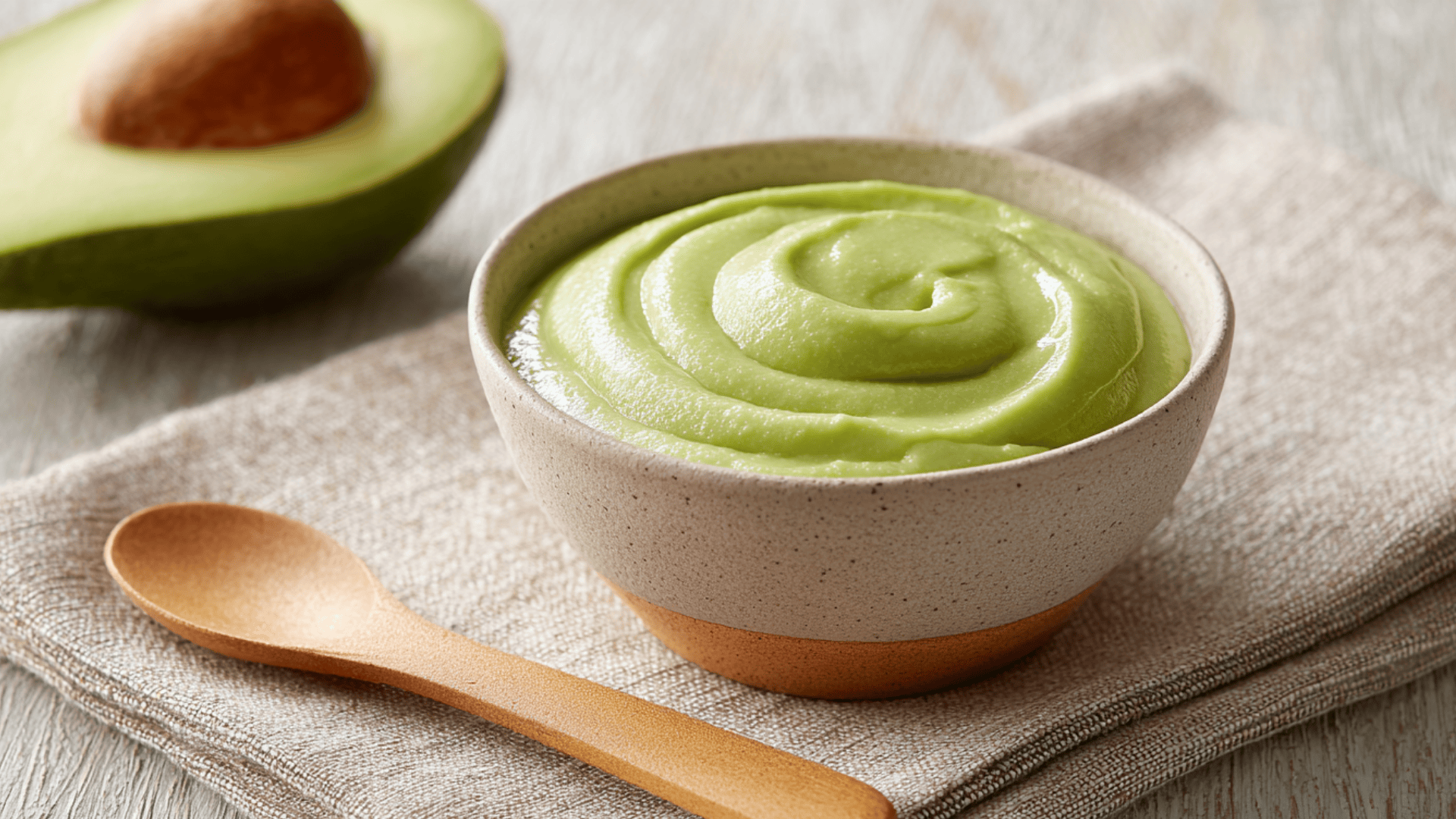
Avocado cream is soft, buttery, and rich in nutrients that help babies grow strong. It’s perfect for introducing healthy fats early and has a texture that’s easy to eat and love.
How to Make:
- Scoop ripe avocado from its shell.
- Mash or blend until creamy.
- Mix with milk or water for a smooth consistency.
Nutritional Facts:
Avocados are full of omega-3 fats that aid brain and nerve development. They also supply vitamins E and K, which support healthy skin and bone strength.
Vegetable Purees and Blends
Vegetable purees add variety, color, and important nutrients to your baby’s diet. They help develop taste preferences early while providing vitamins and minerals that support healthy growth and digestion.
6. Carrot Puree
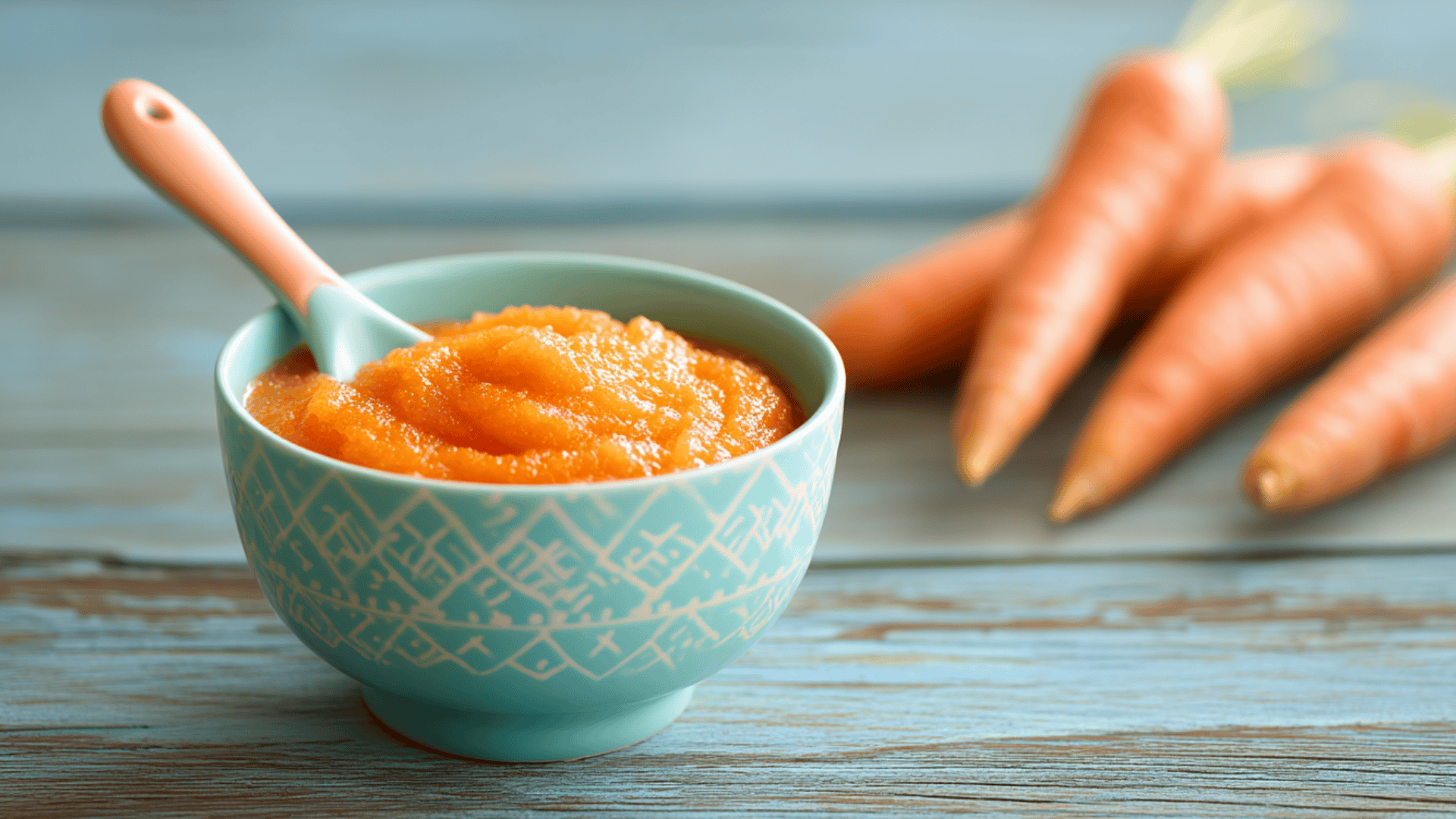
Carrot puree is smooth, naturally sweet, and bright in color, making it a fun first veggie for babies. It’s gentle on digestion and offers a comforting flavor most little ones enjoy right away.
How to Make:
- Peel and chop fresh carrots.
- Steam or boil until soft.
- Blend with water until creamy.
- Cool before serving.
Nutritional Facts:
Carrots are rich in beta-carotene, which supports healthy vision. They also offer antioxidants that help protect developing cells from damage.
7. Sweet Potato Mash
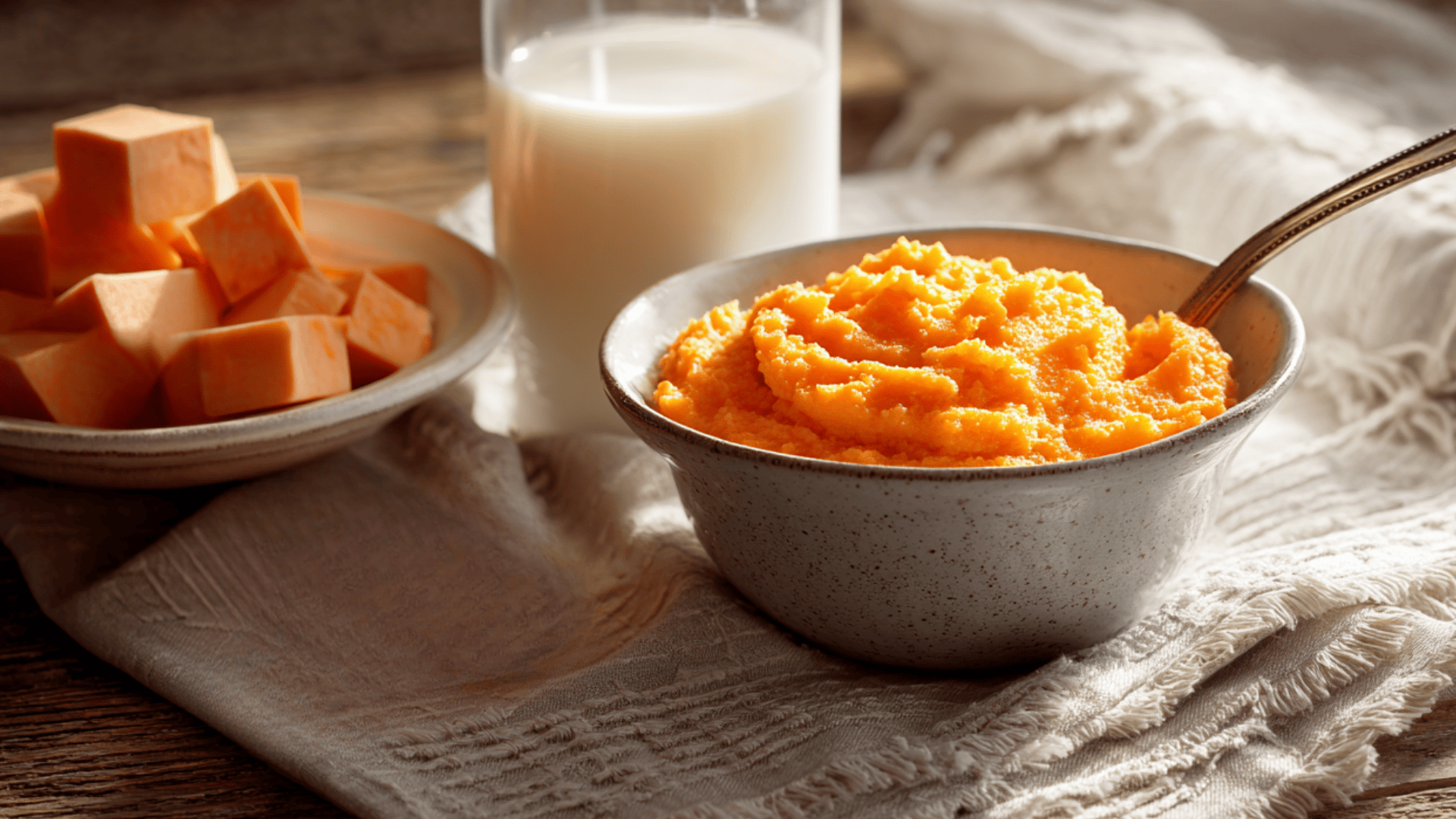
Sweet potato mash is rich, creamy, and naturally sweet. It’s a filling and nutritious meal that keeps babies satisfied while providing long-lasting energy for growth and development.
How to Make:
- Peel and dice the sweet potato.
- Boil or steam until tender.
- Mash with a fork until smooth.
- Add water or milk if needed.
Nutritional Facts:
Sweet potatoes are rich in vitamin A, which promotes strong eyesight. They also contain fiber and complex carbs that aid digestion and energy levels.
8. Pumpkin Puree

Pumpkin puree has a mild flavor and a soft texture, making it perfect for first-time cooks. It’s naturally sweet, easy to prepare, and blends beautifully with other foods as your baby’s taste expands.
How to Make:
- Peel and cut the pumpkin into cubes.
- Steam for 10–12 minutes until soft.
- Blend until smooth and creamy.
- Cool before feeding.
Nutritional Facts:
Pumpkin provides fiber for healthy digestion and a feeling of fullness. It’s also high in vitamin C, supporting your baby’s immune system.
9. Broccoli and Pea Puree
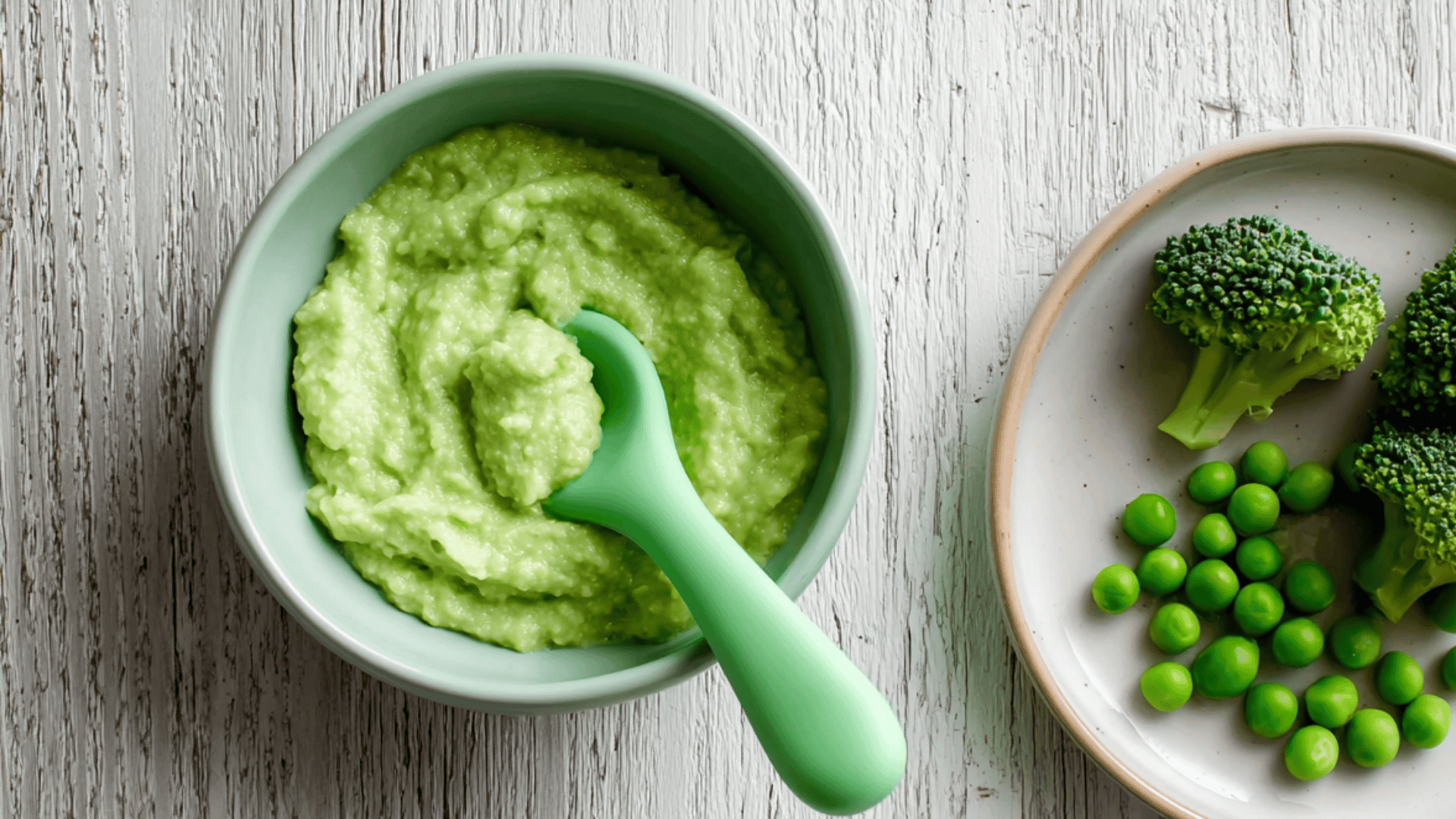
This green blend combines two nutrient-rich veggies for older babies. It’s mild in taste, easy to digest, and perfect for introducing greens in a smooth, pleasant way.
How to Make:
- Wash and chop broccoli florets.
- Steam broccoli and peas until soft.
- Blend with a few spoons of water until smooth.
Nutritional Facts:
Broccoli and peas are rich in iron and vitamin K, which help blood and bone health. They also contain protein and fiber to support digestion.
10. Spinach and Potato Blend
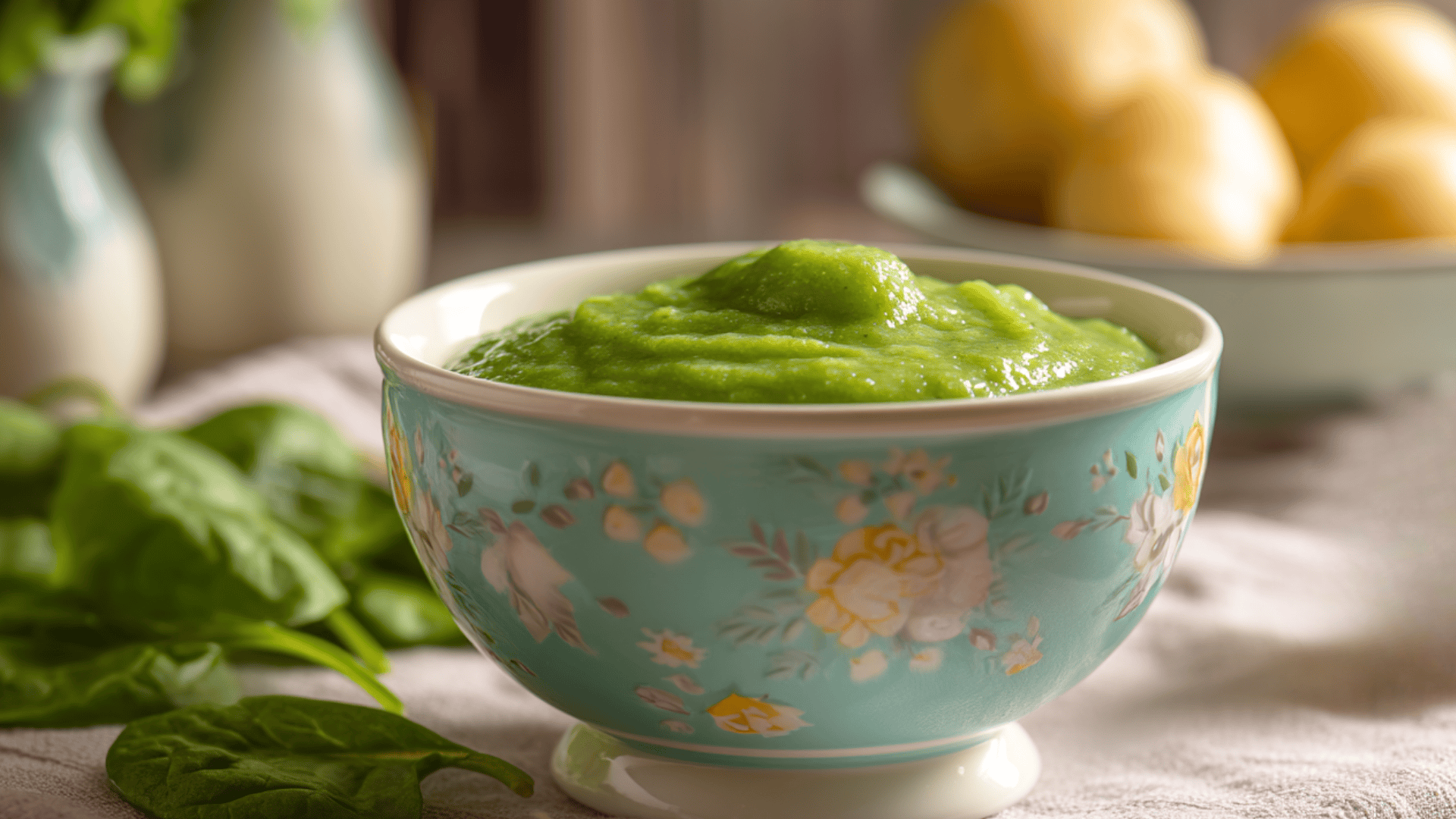
The spinach and potato blend is creamy, earthy, and full of balanced nutrients. It’s a great step up for babies ready for thicker textures and stronger flavors.
How to Make:
- Peel and dice the potato, and wash the spinach leaves.
- Boil together until soft.
- Mash or blend into a creamy texture.
Nutritional Facts:
Spinach is a rich source of iron, calcium, and vitamins A and C. Potatoes provide energy and help make the puree smooth and filling.
Grain-Based Baby Foods
Grains are gentle on tiny tummies and make great energy-boosting meals. They blend easily with fruits or veggies, helping your baby get both comfort and nutrition in every bite.
11. Rice Cereal
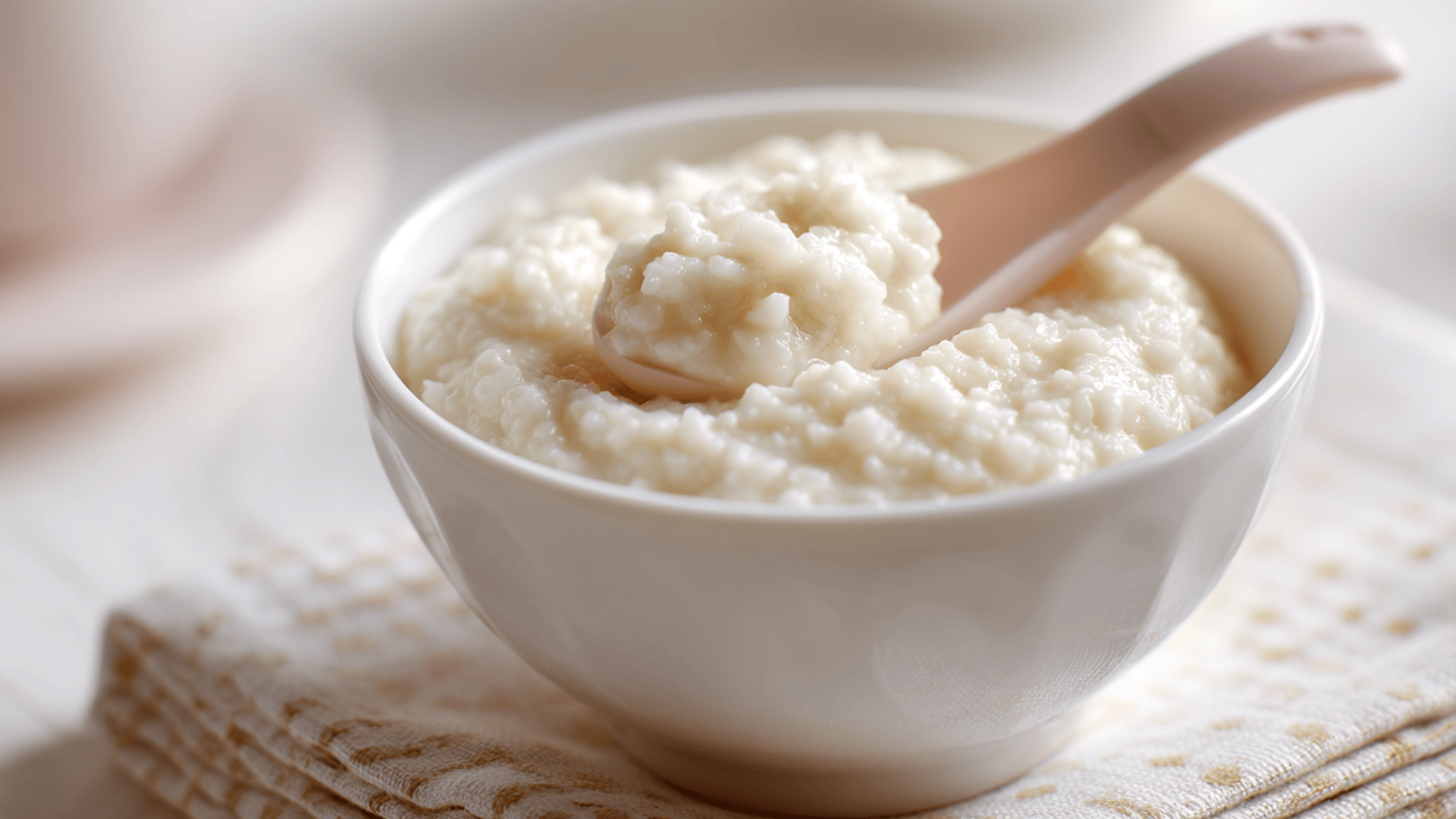
Rice cereal is one of the most common first foods for babies. It’s light, easy to digest, and makes a smooth base for adding fruits or veggies later on.
How to Make:
- Cook white or brown rice until very soft.
- Blend with warm water, milk, or formula.
- Cool slightly before serving.
Nutritional Facts:
Rice provides carbohydrates for steady energy and fullness. It’s also gentle on digestion, making it ideal for first-time feeders.
12. Oatmeal with Banana
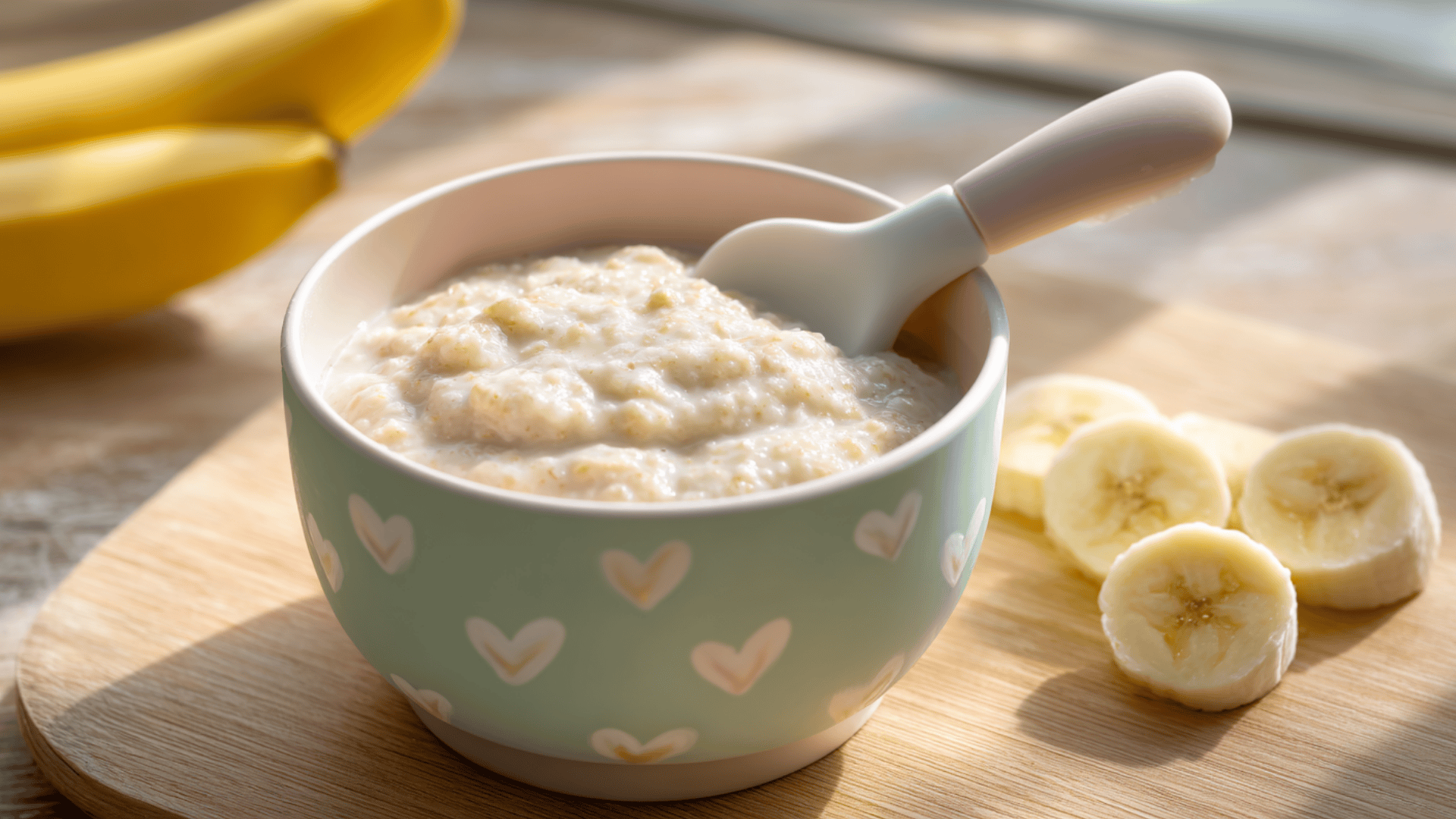
This warm and creamy mix makes a comforting breakfast. It’s filling, naturally sweet, and keeps babies full longer while giving steady energy throughout the morning.
How to Make:
- Cook oats in water until soft.
- Mash a ripe banana and add it to the mix.
- Stir well until smooth.
Nutritional Facts:
Oats are high in fiber, which helps support digestion and gut health. Bananas provide potassium and natural sweetness, offering a balanced nutritional profile.
13. Quinoa and Sweet Potato Mash
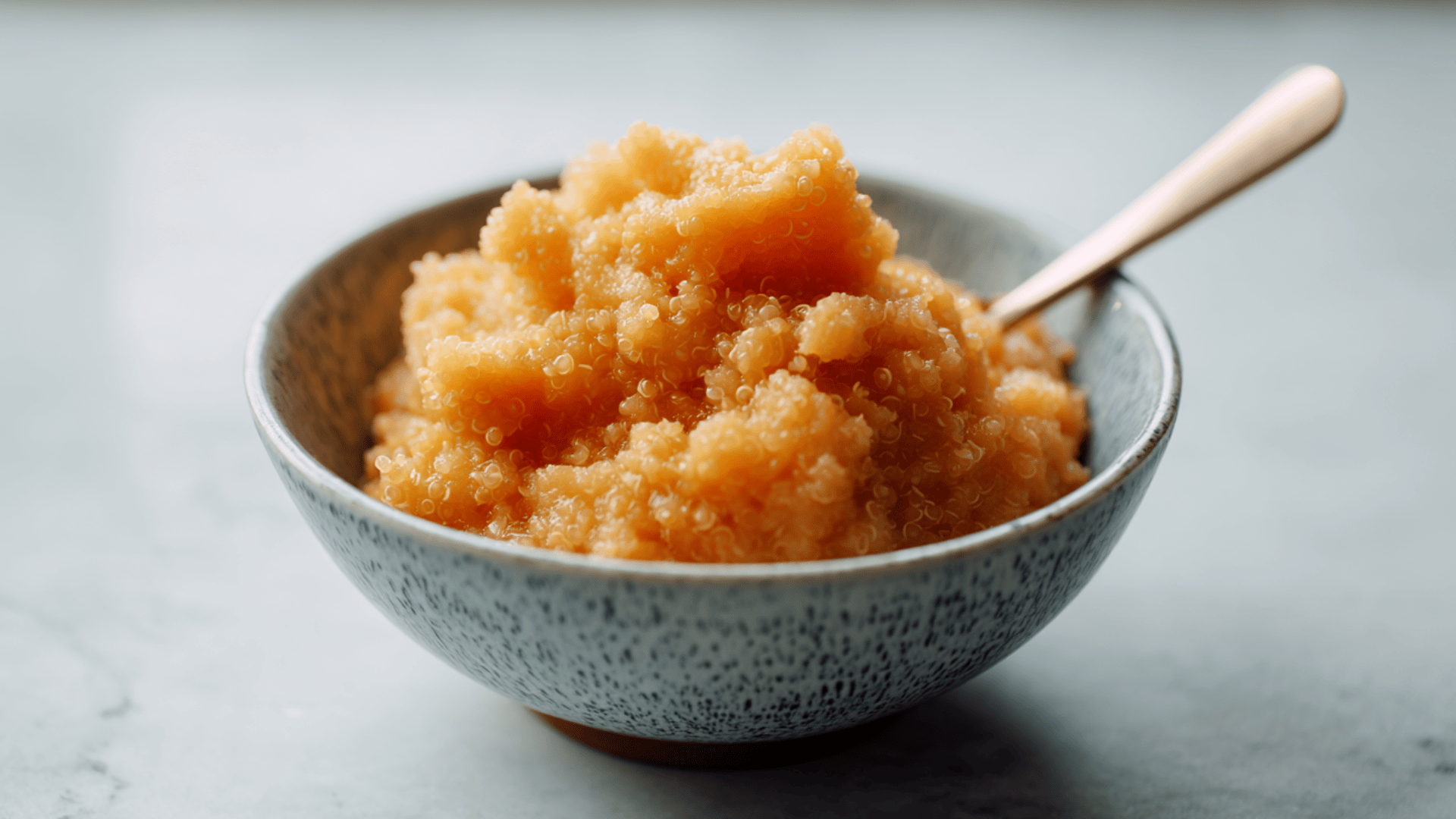
This blend is hearty and satisfying, giving your baby a mix of smooth and slightly grainy textures. It’s a wonderful way to introduce protein and flavor early.
How to Make:
- Rinse and cook quinoa until soft.
- Steam sweet potato until tender.
- Mash or blend them together.
Nutritional Facts:
Quinoa provides complete plant-based protein and iron, supporting muscle growth. Sweet potatoes add vitamin A and fiber to keep your baby full.
14. Apple Cinnamon Oats
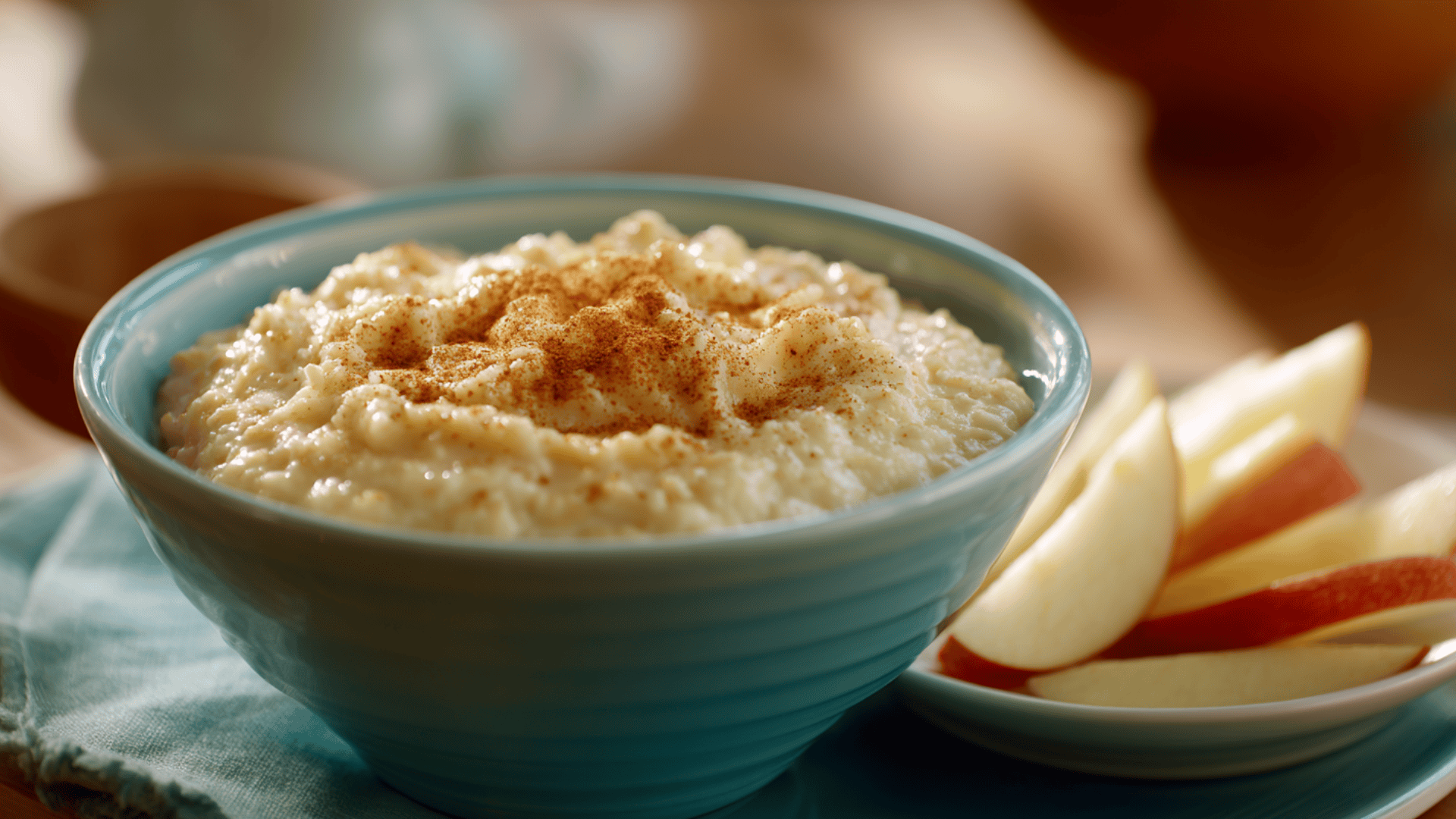
This mildly sweet combo tastes like comfort in a bowl. It’s perfect for babies 9 months and up, when they start enjoying new flavors and textures.
How to Make:
- Cook oats with water or milk until thick.
- Stir in apple puree and a small pinch of cinnamon.
- Mix until smooth and warm.
Nutritional Facts:
Oats provide fiber and complex carbs for lasting energy. Apples and cinnamon add antioxidants that support overall wellness.
15. Rice and Spinach Porridge

This savory blend is soft, nourishing, and full of gentle flavor. It’s perfect for lunch or dinner and helps babies get comfortable with mild greens.
How to Make:
- Cook rice until tender.
- Steam spinach leaves separately.
- Blend both with water until smooth.
Nutritional Facts:
Spinach provides iron and vitamins that support the formation of red blood cells. Rice contributes energy-rich carbs for steady growth and stamina.
Protein-Rich Meals
Protein-rich foods give your baby the building blocks for healthy muscles and growth. These meals are soft, easy to digest, and packed with the right mix of nutrients for early development.
16. Lentil and Carrot Puree

A warm, creamy meal that’s filling and gentle on your baby’s stomach. It introduces plant protein and fiber while keeping the flavor mild and naturally sweet.
How to Make:
- Rinse red lentils and peel a medium carrot.
- Boil both in water for 10–12 minutes.
- Blend until smooth and creamy.
- Add a splash of water for the desired texture.
Nutritional Facts:
Lentils are full of iron and protein that build strength. Carrots provide vitamin A to support eyesight and immune function.
17. Chicken and Veggie Mash
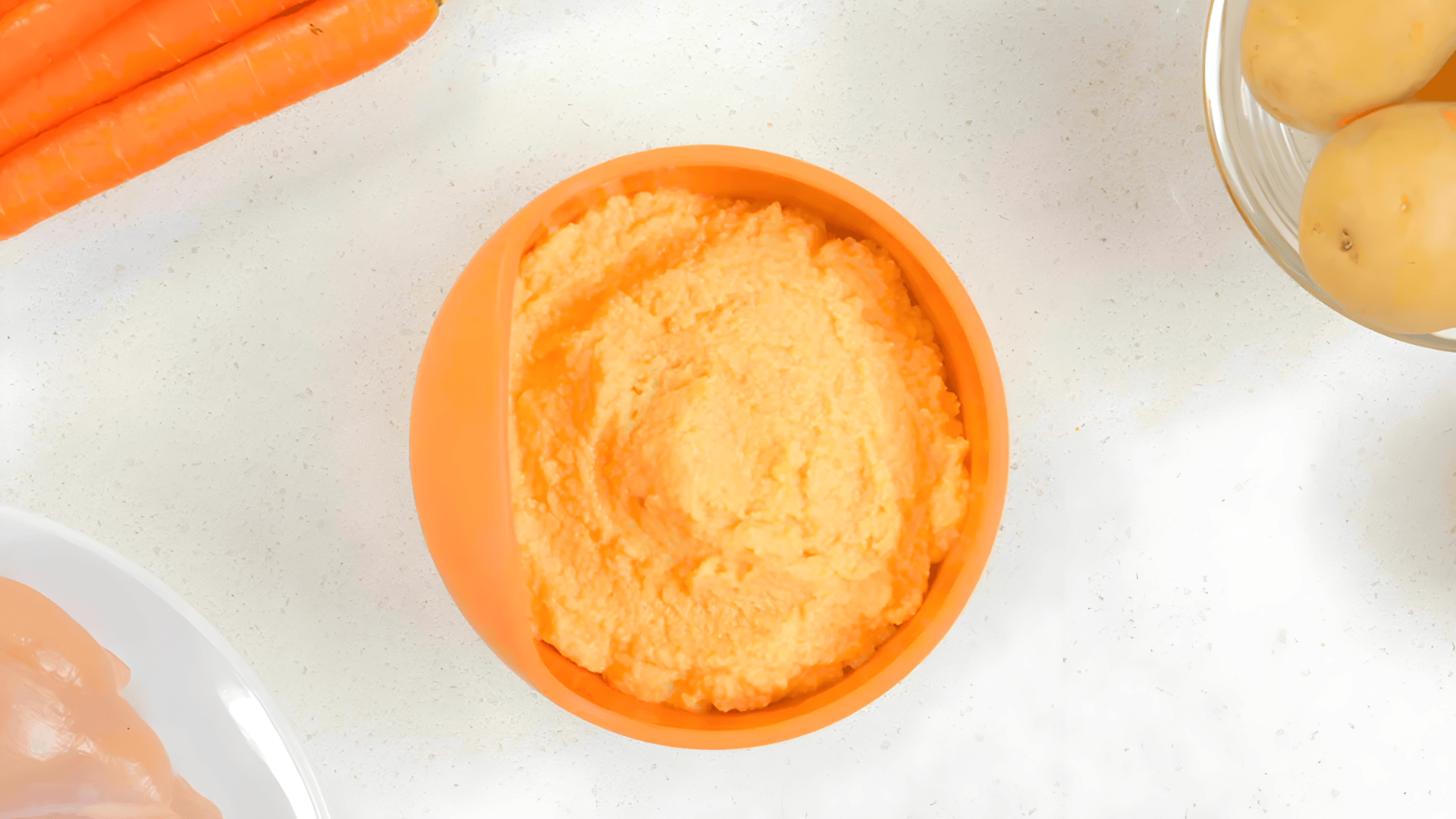
This hearty meal combines soft chicken and tender vegetables. It’s flavorful but mild, making it a good bridge from purees to more textured foods.
How to Make:
- Cut boneless chicken into small pieces.
- Boil the chicken, carrots, and peas together until they are tender.
- Drain excess water and mash lightly.
- Add a spoonful of broth for smoothness, and serve warm.
Nutritional Facts:
Chicken is a rich source of high-quality protein and vitamin B12. The veggies add fiber, vitamin C, and natural sweetness.
18. Egg Yolk Mash
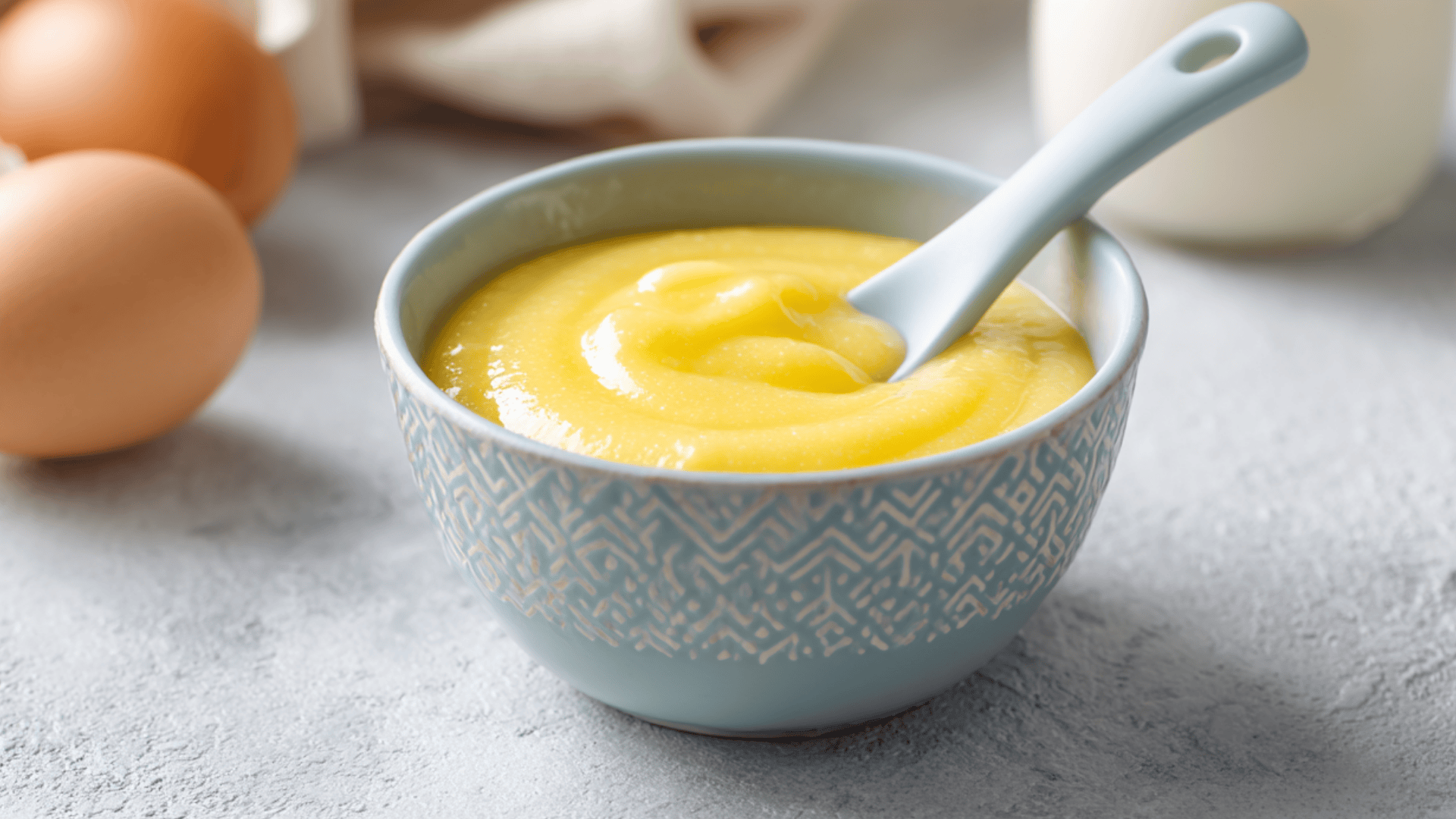
This soft, creamy meal is ideal for babies over eight months. It’s rich in good fats and helps your baby explore new flavors safely.
How to Make:
- Hard-boil an egg for 8 to 10 minutes.
- Separate the yolk from the white and discard the latter.
- Mash the yolk with warm milk or water.
Nutritional Facts:
Egg yolks are rich in choline, which is essential for brain development. They also contain healthy fats that help absorb vitamins.
19. Tofu and Rice Blend

A mild, plant-based option that’s both filling and easy to digest. The mix of soft rice and tofu gives a balanced and creamy meal for any time of day.
How to Make:
- Steam soft tofu for 4–5 minutes.
- Cook rice until tender.
- Mash tofu with rice using a spoon or fork.
- Add a few drops of broth for a smoother mix.
Nutritional Facts:
Tofu provides calcium and complete protein, which are essential for strong bones. Rice provides complex carbohydrates that help keep your baby energized.
20. Lentil Pancakes
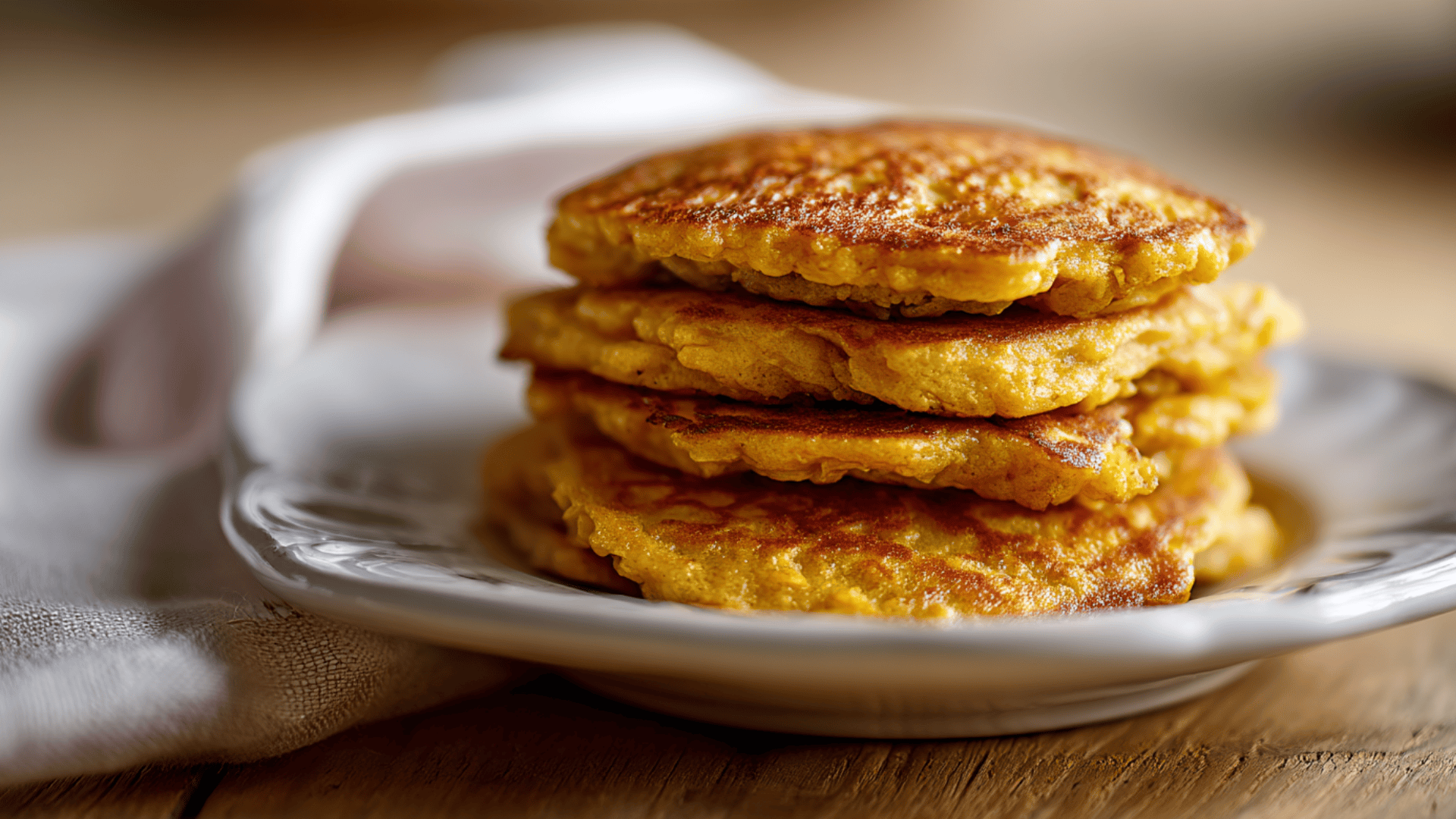
These mini pancakes make self-feeding fun and a healthy option. They’re soft, slightly savory, and easy for little hands to hold and chew.
How to Make:
- Soak red lentils for 3–4 hours.
- Blend into a smooth batter with a little water.
- Heat a nonstick pan and pour small rounds.
- Cook each side until lightly golden.
Nutritional Facts:
Lentils provide fiber and iron for energy and blood health. They also offer protein that supports natural muscle growth.
Mixed Meals for Stage 3 (10–12 Months)
At this stage, your baby’s ready for variety and texture. These mixed meals offer more flavor, soft chunks, and nutrition that feels closer to family-style food.
21. Mashed Potato with Spinach and Cheese
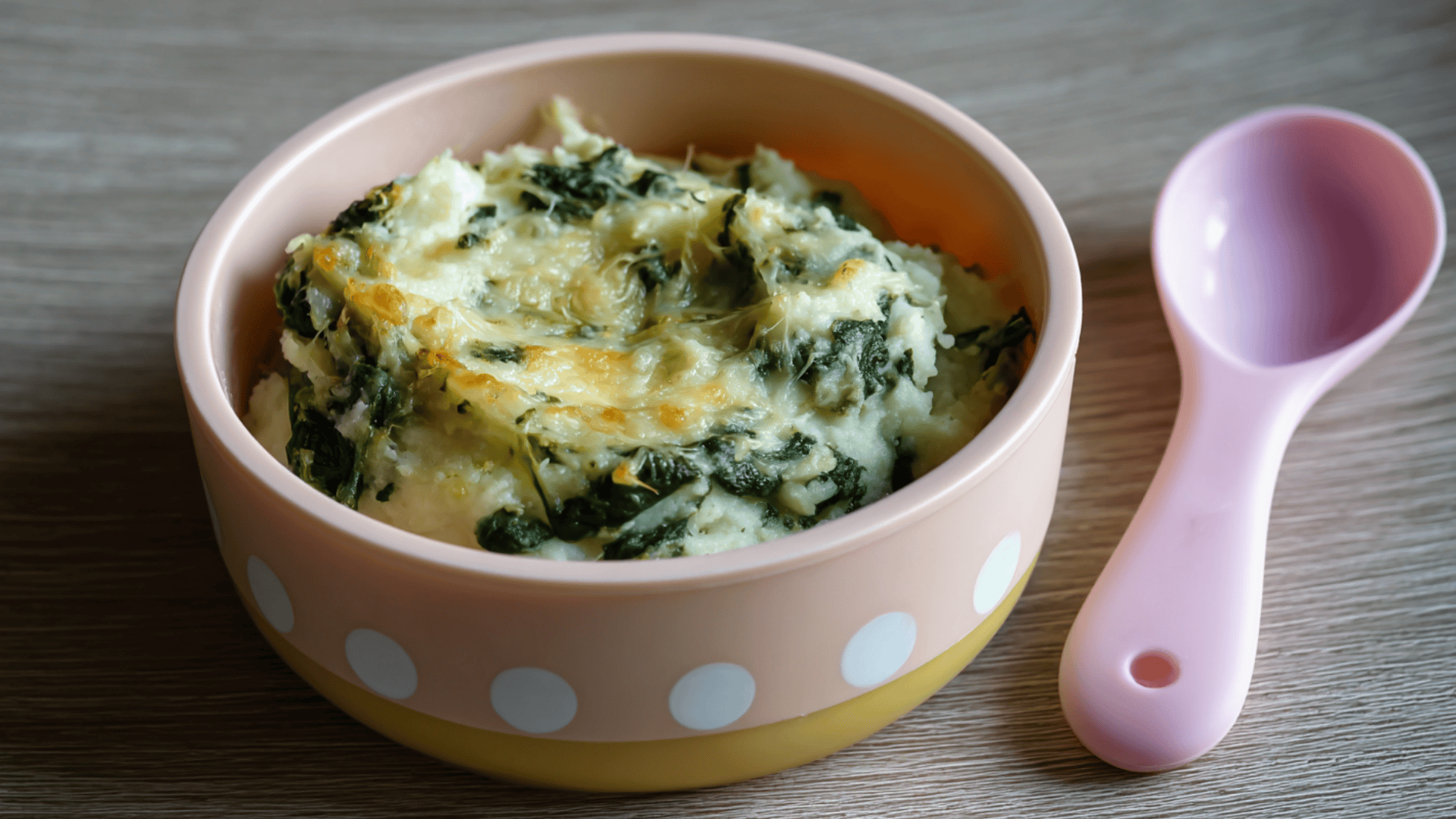
A smooth, creamy dish that’s mild and comforting. It works perfectly for lunch or dinner and helps babies enjoy greens without bitterness.
How to Make:
- Peel and chop potatoes into cubes.
- Boil potatoes and spinach together until soft.
- Mash both until smooth.
- Mix in the grated cheese while it’s still warm.
Nutritional Facts:
Spinach is a rich source of iron and calcium, which support bone health. Cheese provides protein and healthy fats for steady growth.
22. Quinoa with Peas and Carrots

This colorful bowl brings together soft quinoa, sweet carrots, and tender peas. It’s light, tasty, and full of balanced nutrition.
How to Make:
- Cook quinoa until fluffy.
- Steam peas and diced carrots.
- Combine all ingredients and stir gently.
- Mash lightly or leave soft bits for chewing practice, serve warm.
Nutritional Facts:
Quinoa is rich in complete protein and minerals. Peas and carrots add fiber and vitamin A for eye and gut health.
23. Banana Yogurt Bowl
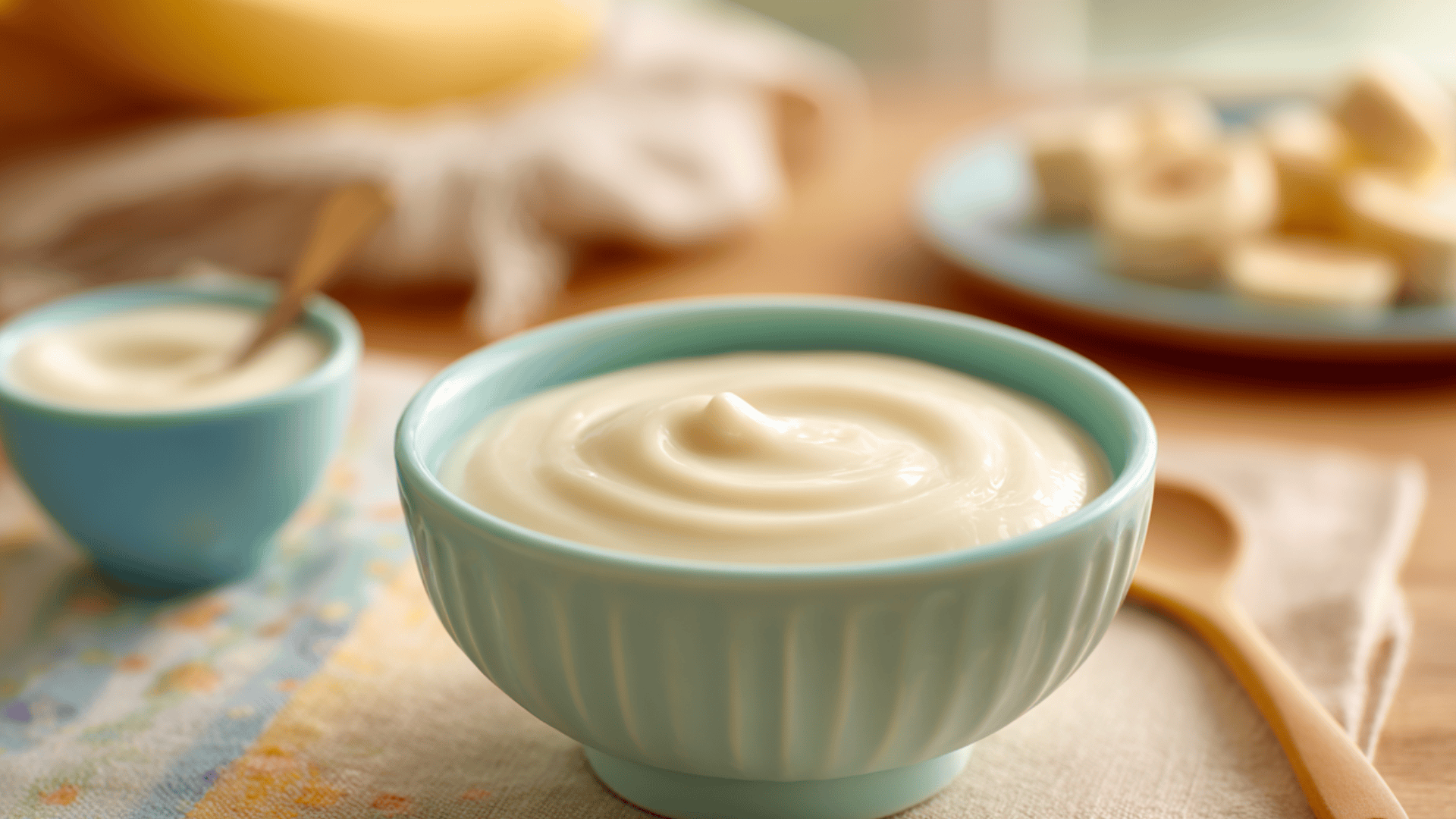
A quick, sweet, and creamy snack that supports gut health. It’s ideal for mornings or as a cooling evening meal.
How to Make:
- Peel and mash a ripe banana.
- Add plain yogurt and mix until smooth.
- Serve cool and fresh.
Nutritional Facts:
Bananas give potassium and quick energy for playtime. Yogurt adds probiotics that strengthen digestion and immunity.
24. Soft Scrambled Egg with Avocado
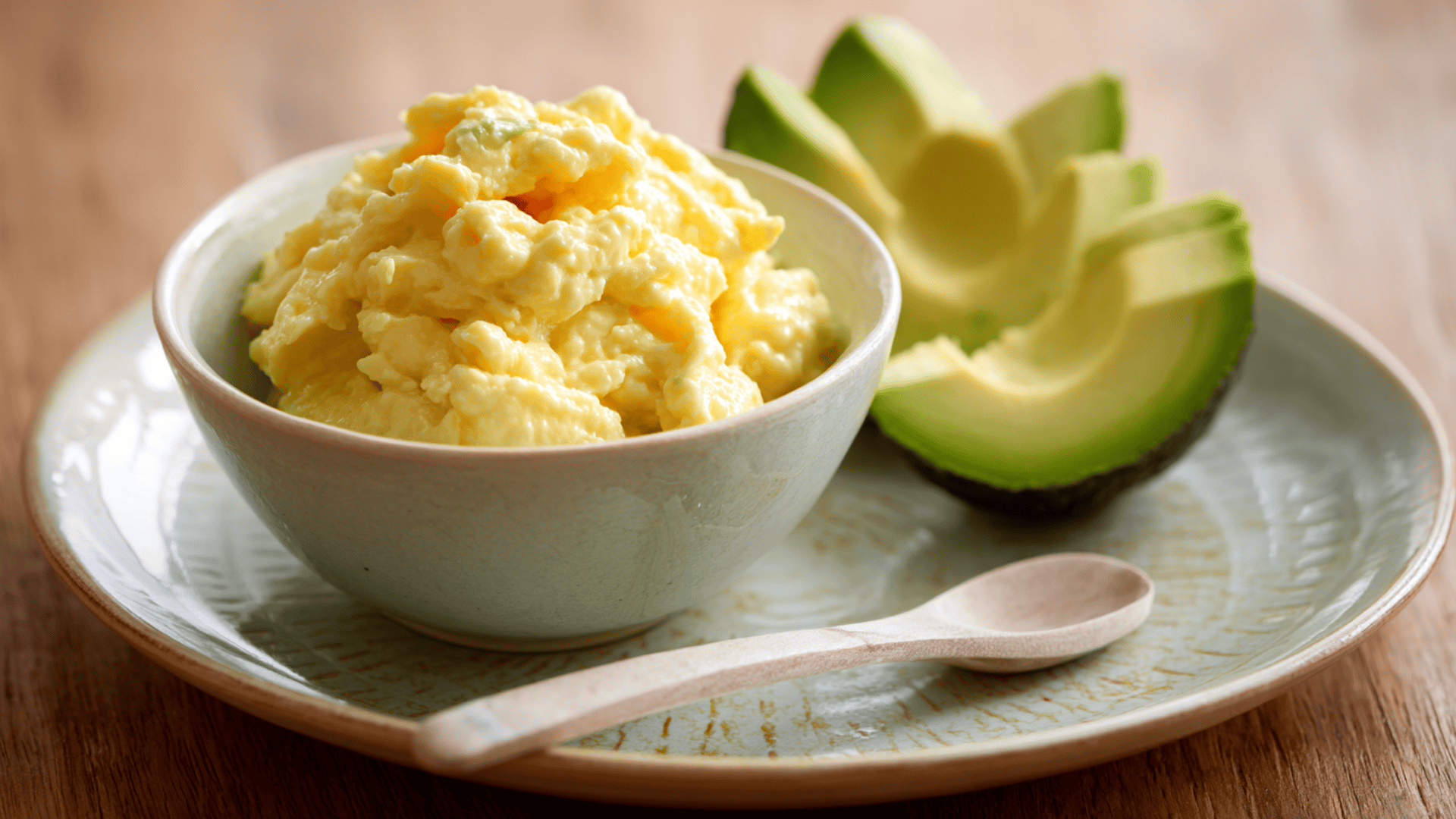
This fluffy, creamy mix is full of flavor and easy to chew. It’s a protein-packed breakfast that keeps babies full for hours.
How to Make:
- Lightly beat an egg with a spoon of milk.
- Cook on low heat, stirring until soft and creamy.
- Mash the avocado and mix it with the egg; serve warm.
Nutritional Facts:
Eggs provide choline and protein for brain and muscle growth. Avocado adds omega-3 fats that support healthy brain function.
25. Vegetable Khichdi (Rice and Lentil Mix)

A soft, flavorful one-pot meal that’s gentle on the tummy and full of nutrients. It’s ideal for dinner and introduces babies to mild Indian-inspired flavors.
How to Make:
- Rinse equal parts rice and yellow lentils.
- Cook them with diced carrots, peas, and a pinch of turmeric.
- Mash lightly with a spoon and add water or broth for a soft consistency.
- Let cool slightly before serving.
Nutritional Facts:
Vegetable khichdi offers a balanced nutrition profile from a combination of rice, lentils, and vegetables. It’s rich in protein, fiber, and essential vitamins that help with growth and digestion.
Trying homemade baby food is a small effort that makes a big difference. With these simple recipes, you can offer your baby healthy, tasty meals made with love, giving them the best start to a lifetime of good eating habits.
Allergen Introduction & Safety
Introducing potential allergens can feel worrying at first, but it’s all about taking it slow and safely.
Knowing when and how to offer these foods helps prevent reactions and builds healthy tolerance early on.
Common Allergens & Timing:
Some common allergens include peanuts, eggs, dairy products, and wheat. It’s best to start one at a time and wait 3–5 days before introducing another. This gap helps you notice any signs of rash, swelling, or discomfort.
If your baby shows no reactions, continue offering that food regularly in small portions. Always consult your pediatrician first if your baby has a family history of allergies.
Food Safety Rules:
Good food habits matter as much as good nutrition. Follow these simple safety steps while preparing and storing homemade baby food:
- No honey before 12 months: It can cause infant botulism, which is unsafe for babies.
- Skip salt, sugar, and processed foods: Babies’ kidneys and taste buds are still developing, so keep it simple and natural.
- Practice safe reheating: Warm food gently in hot water instead of microwaving to preserve nutrients and texture.
Introducing new foods safely takes patience and attention, but it’s worth it. By following these allergen and food safety tips, you can help your baby experience new flavors with confidence and care.
Safe Storage and Serving Tips
Proper storage keeps homemade baby food fresh, safe, and full of nutrients. These simple steps help you handle, refrigerate, and serve meals the right way every time:
- Use BPA-free containers: Always store purees in food-safe, airtight containers.
- Refrigerate for short-term use: Keep purees in the fridge for up to 3 days only.
- For longer storage: Freeze baby food portions safely for up to 1 month.
- Label and date containers: Write down the recipe name and storage date before freezing.
- Warm food gently: Use a hot water bath or warm bowl, and avoid direct microwaving to preserve nutrients.
- Check temperature before feeding: Stir and test the food to ensure it’s just warm, not hot.
Keeping food storage simple and safe means you’ll always have healthy meals ready to go. It also ensures your baby enjoys every bite fresh, flavorful, and nourishing.
Conclusion
Making homemade baby food is one of the most rewarding things you can do for your little one.
You’ve learned how simple it can be to make healthy baby meals at home. From prep to feeding, every step is easier than it looks once you start.
I know it can feel overwhelming at first, but once you start, you’ll see how fun and simple it really is. You get to control what goes into every meal, knowing it’s fresh, safe, and made with love.
Now it’s your turn – try a few recipes, mix flavors, and enjoy watching your baby grow strong and happy with every bite!










